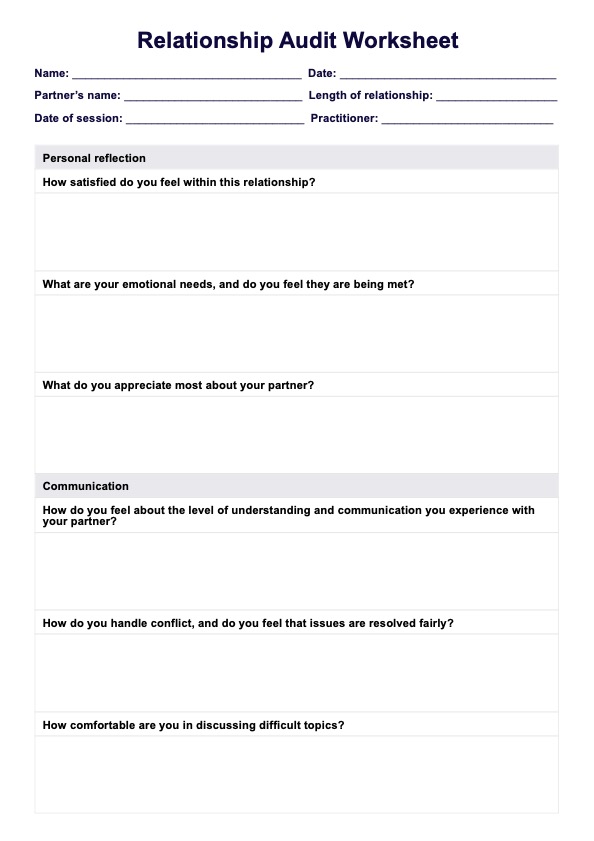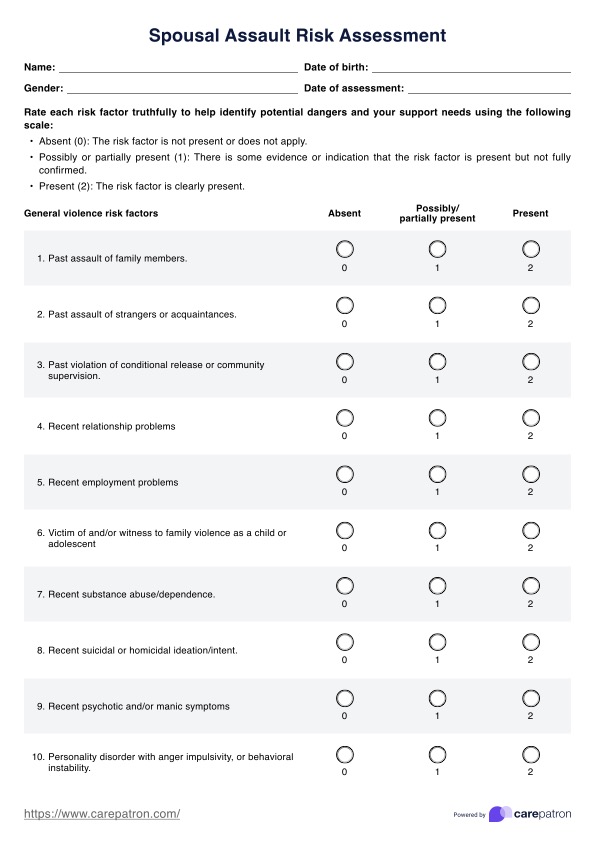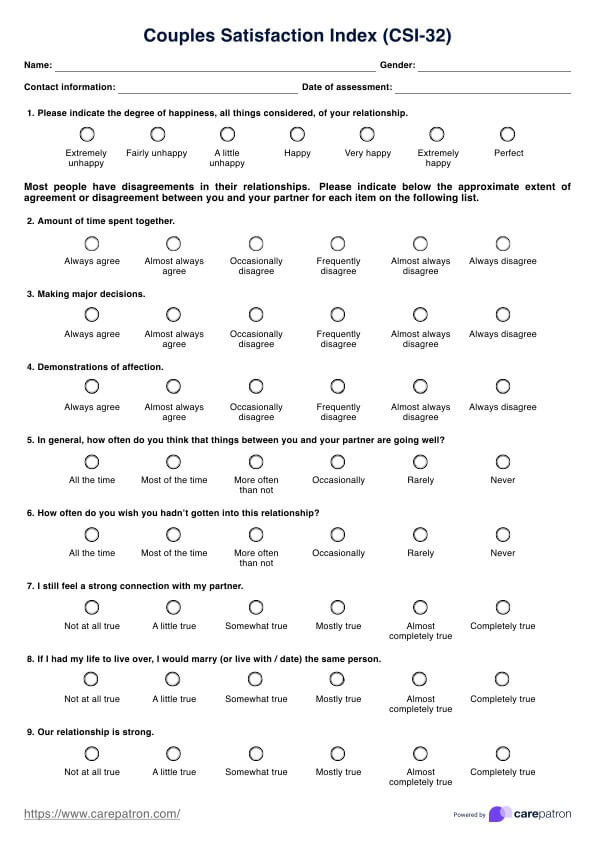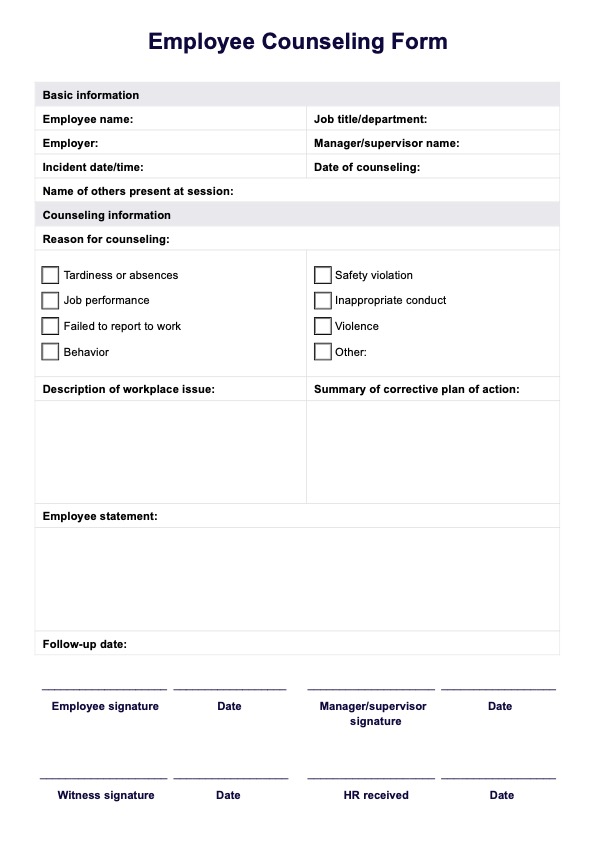Setting Boundaries With Relationships Worksheets
Dive into Carepatron's latest resource—The Setting Boundaries With Relationships Worksheet. Optimize therapeutic interventions and streamline your practice today!


What Is A Setting Boundaries With Relationships Worksheet?
To the esteemed professionals working at the forefront of mental and emotional health: Understanding the dynamics of romantic relationships is a nuanced endeavor. One of the most prevalent issues many couples face today revolves around setting and respecting boundaries. Properly defined boundaries are crucial, not just for maintaining harmony but also for the mental well-being of both parties involved.
The "" is a meticulously curated tool designed to help individuals in relationships identify, articulate, and establish their boundaries. It serves as an insightful guide, assisting patients to comprehend where they stand on various relational matters, enabling them to communicate their needs more clearly to their partners. By working through this worksheet, patients can gain clarity, reduce potential conflict areas, and build stronger, healthier romantic partnerships.
For healthcare professionals, this worksheet is a valuable addition to your therapeutic toolkit. It bridges the gap between understanding theoretical concepts of boundaries and applying them in real-world romantic settings. Given the complexity of human emotions and interactions, tools like these are instrumental in fostering constructive dialogues and promoting emotional wellness. So, whether you're a psychologist, counselor, therapist, or healthcare provider, this resource is crafted to guide your patients toward more fulfilling romantic relationships.
Looking for other useful resources? Feel free to watch the video below:
Setting Boundaries With Relationships Worksheets Template
Setting Boundaries With Relationships Worksheets Example
How To Use the Setting Boundaries With Relationships Worksheet
Setting appropriate boundaries is paramount for mental and emotional well-being in the complex world of romantic relationships. As healthcare professionals, our role involves more than just understanding these dynamics; it's about guiding individuals and couples toward constructive interactions. The "Setting Boundaries With Relationships Worksheet" is designed to aid this journey. Here's a step-by-step guide on how to effectively utilize this worksheet:
Step 1: Introduction and Rapport Building
Begin by explaining the purpose of the worksheet to your patient. Emphasize the importance of honesty in their responses, assuring them that their answers remain confidential.
Step 2: Gathering Medical and Relationship History
Before diving into the worksheet, gather the necessary medical and relationship history. Understand any past traumas or experiences that might influence their perspective on boundaries.
Step 3: Distributing the Worksheet
Hand over the worksheet, ensuring the patient has adequate time and a conducive environment to fill it out. Offer assistance or clarification on any questions they might find challenging.
Step 4: Discussion and Feedback
Once completed, discuss the patient's responses. This conversation offers insights into their feelings and experiences related to boundary-setting. Provide feedback, highlighting areas where they excel and areas needing improvement.
Step 5: Crafting a Plan
Based on the responses and discussions, collaboratively devise a plan to address areas where boundaries need strengthening. Recommend techniques or exercises that can help in boundary-setting.
Step 6: Follow-up and Re-evaluation
Schedule a follow-up session to gauge the patient's progress. Modify strategies based on real-world experiences and patient challenges in implementing boundaries.
In conclusion, the "Setting Boundaries With Relationships Worksheet" is a potent tool in the hands of a skilled healthcare professional. It fosters self-awareness, communication, and personal growth in romantic relationships. Systematically going through each step can guide our patients toward healthier, more fulfilling romantic interactions, linking theory to tangible outcomes.
When Would You Use This Form?
Understanding the dynamics of setting boundaries in romantic relationships is crucial in therapy and counseling. The "Setting Boundaries With Relationships Worksheet" offers an in-depth and structured approach to navigating these nuances. But when would a healthcare professional typically deploy this resource? Let's unpack the scenarios.
- Initial Assessment in Relationship Counseling: At the commencement of relationship therapy sessions, to understand the current boundary dynamics and issues.
- Identifying Recurring Relationship Patterns: When a patient exhibits a history of repeating specific relational behaviors that might be tied to boundary concerns.
- Addressing Specific Boundary Violations: Post incidents of trust breaches, emotional or physical infidelity, or any boundary-related disputes in relationships.
- Relationship Strengthening: In couples therapy, the goal is to fortify the ties against future challenges and enhance mutual respect.
- Recovery from Past Traumatic Relationships: Assisting individuals in recognizing and rectifying boundary patterns that might have stemmed from previous traumatic relationships.
- Preparation for New Relationships: Helping those about to embark on a new romantic journey, ensuring they set healthy boundaries.
- Relationship Termination or Divorce Counseling: Guiding individuals or couples through the termination of a relationship, ensuring the boundaries set during this process are healthy and mutually respected.
In essence, this form finds its application in many situations spanning the lifecycle of romantic relationships, from inception to conclusion. This worksheet is an invaluable ally for healthcare professionals seeking a reliable tool to dissect, understand, and remediate boundary-related concerns. It ensures that the patient's voice, reflected in real-life examples like James Sy, is at the heart of the therapeutic process.
Benefits
Comprehensive Insight
By leveraging the "Setting Boundaries With Relationships Worksheet," healthcare professionals thoroughly understand a patient's relational boundary dynamics, aiding in more informed therapeutic decisions.
Streamlined Process
The structured format ensures consistency in assessment, enabling practitioners to save time and keep patient sessions focused on pertinent issues.
Enhanced Patient Engagement
Patients can actively participate in their therapeutic journey, providing real-time feedback and reflections on their boundary-setting experiences.
Data-driven Decision Making
With the captured information, professionals can identify patterns, triggers, and areas of concern, leading to more data-backed therapeutic interventions.
Customizable to Individual Needs
The template's versatility means it can be adapted to fit the unique needs of diverse patients, ensuring inclusivity in therapy sessions.
Facilitates Progress Tracking
Over multiple sessions, professionals can use the worksheet to monitor changes, improvements, or areas needing more attention, promoting more targeted therapeutic approaches.
Research & Evidence
The concept of setting boundaries in relationships isn't new, but its systematic assessment through structured worksheets has evolved over the past few decades. Boundaries in relationships can be traced back to foundational psychoanalytic theories. Freud, for instance, emphasized the importance of differentiating the self from others as a fundamental developmental task.
Fast forward to the late 20th century, and the importance of setting boundaries became a popular theme in self-help literature, particularly in the works of Cloud and Townsend's "Boundaries: When to Say Yes, How to Say No To Take Control of Your Life" which emphasized the importance of setting limits to achieve a balanced life.
A study published in the Journal of Social and Personal Relationships 2002 highlighted the critical role boundaries play in relationship satisfaction. The research pinpointed that couples who communicated and respected each other's boundaries reported higher relationship satisfaction levels.
Furthermore, a 2016 article in the Journal of Marital and Family Therapy demonstrated that partners who actively engaged in boundary-setting exercises, similar to those found in structured worksheets, experienced reduced relationship distress and increased intimacy.
Consistently, research in Clinical Psychology Review has emphasized the importance of boundary-setting as a preventive measure to avoid relationship burnout and emotional exhaustion, especially in couples where one or both partners have experienced past traumas or have mental health challenges.
In conclusion, the Setting Boundaries With Relationships Worksheet is rooted in decades of psychological research and evidence. Its structured approach offers a systematic way to integrate proven therapeutic interventions into contemporary relationship counseling.
References
Clinical Psychology Review. (2018). Boundary-setting in couples: The role in preventing emotional exhaustion and burnout. Vol. 60.
Cloud, H., & Townsend, J. (1992). Boundaries: When to say yes, how to say no to take control of your life. Zondervan.
Journal of Marital and Family Therapy. (2016). Boundary-setting exercises in couples therapy: An empirical analysis. Vol. 42, No. 3.
Journal of Social and Personal Relationships. (2002). Boundary setting in romantic relationships: An analysis with relationship satisfaction. Vol. 19, No. 2.
Commonly asked questions
Absolutely! Carepatron is designed to allow healthcare professionals to easily customize worksheets to suit the individual needs of their patients.
Yes, data security is a top priority at Carepatron. All data is end-to-end encrypted, and the platform adheres to HIPAA-compliant measures to ensure the utmost privacy.
Getting started is simple! Sign up on the Carepatron website, and you'll have instant access to all its features, including the Setting Boundaries With Relationships Worksheet.


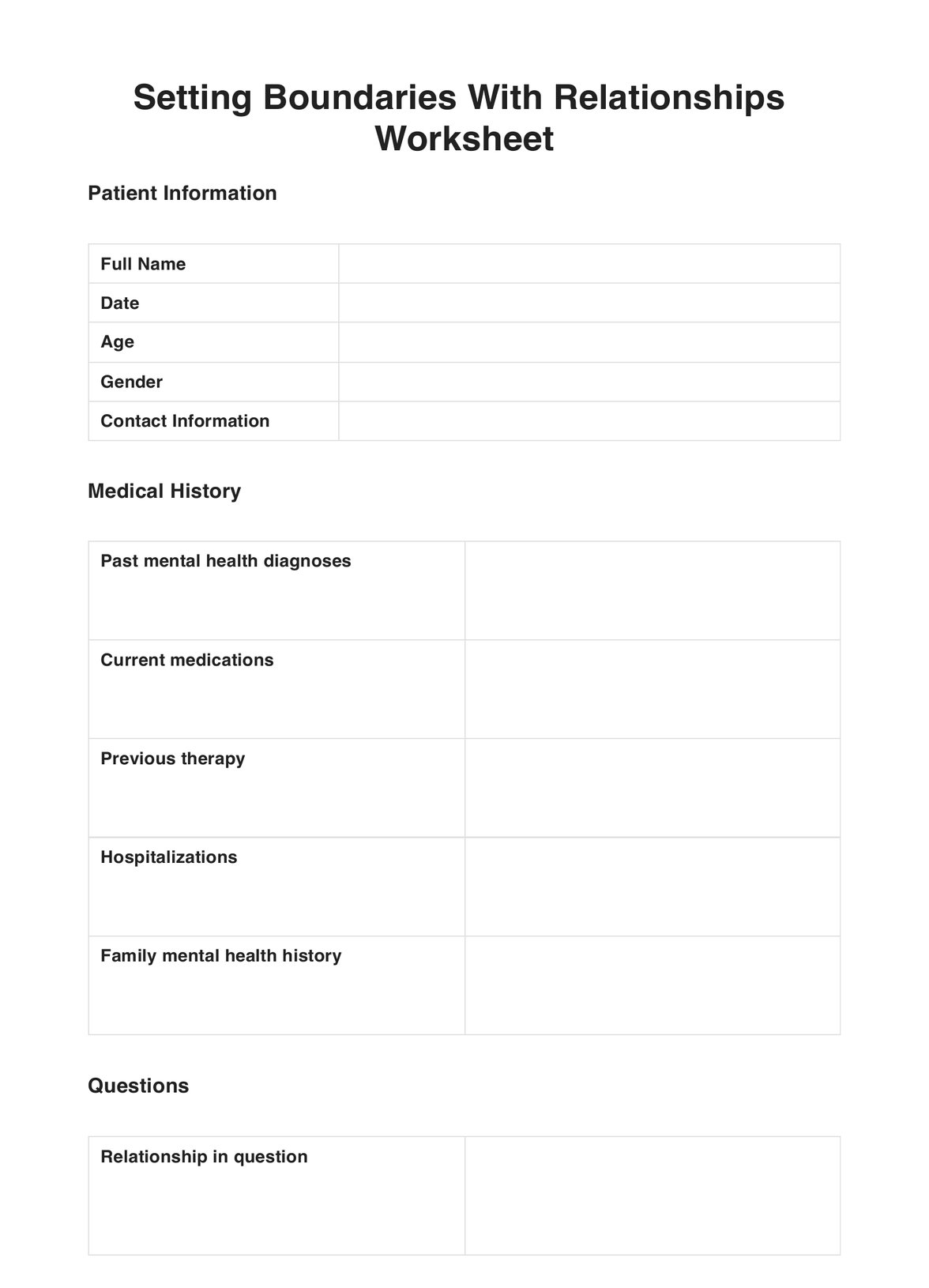
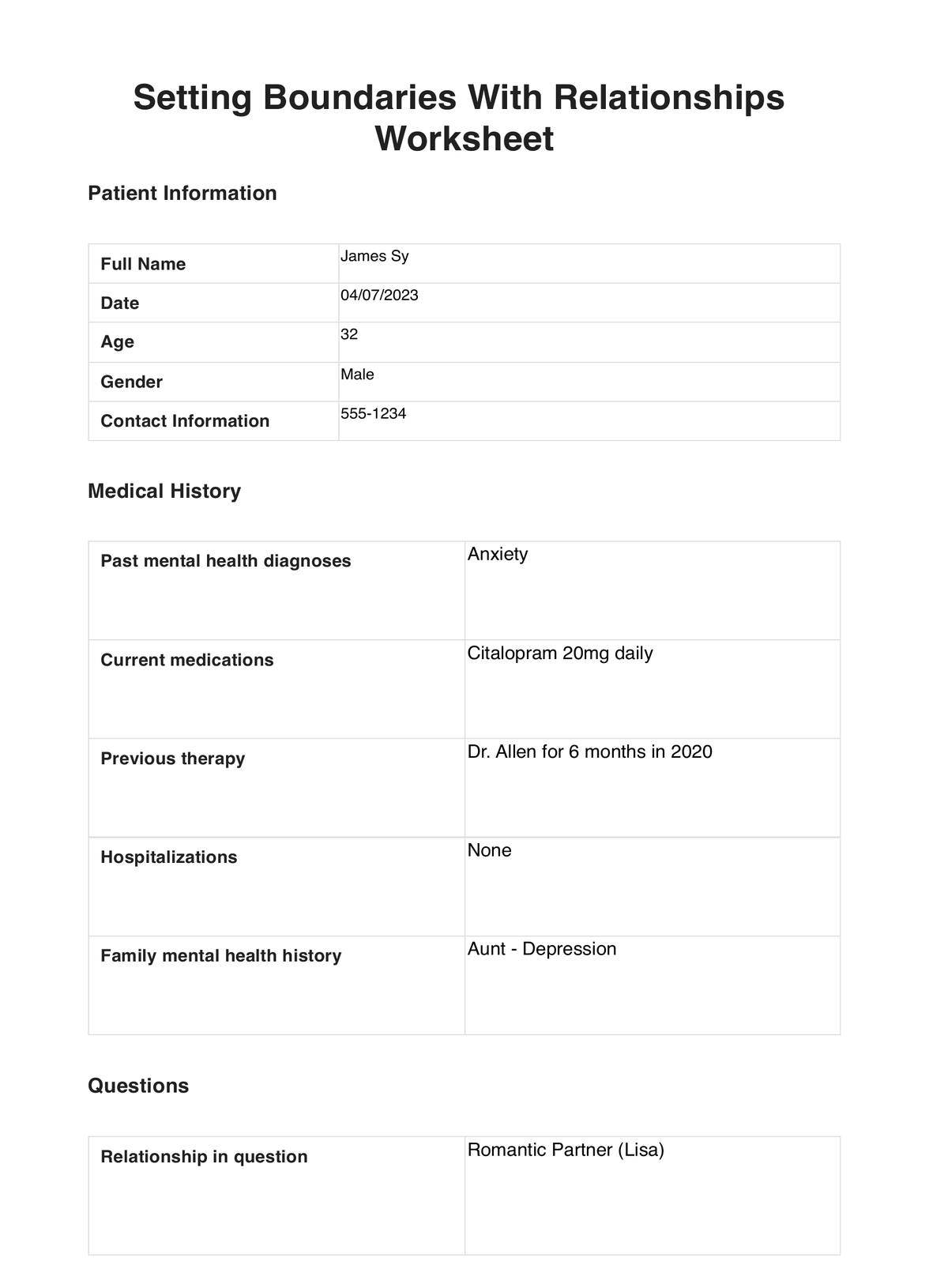

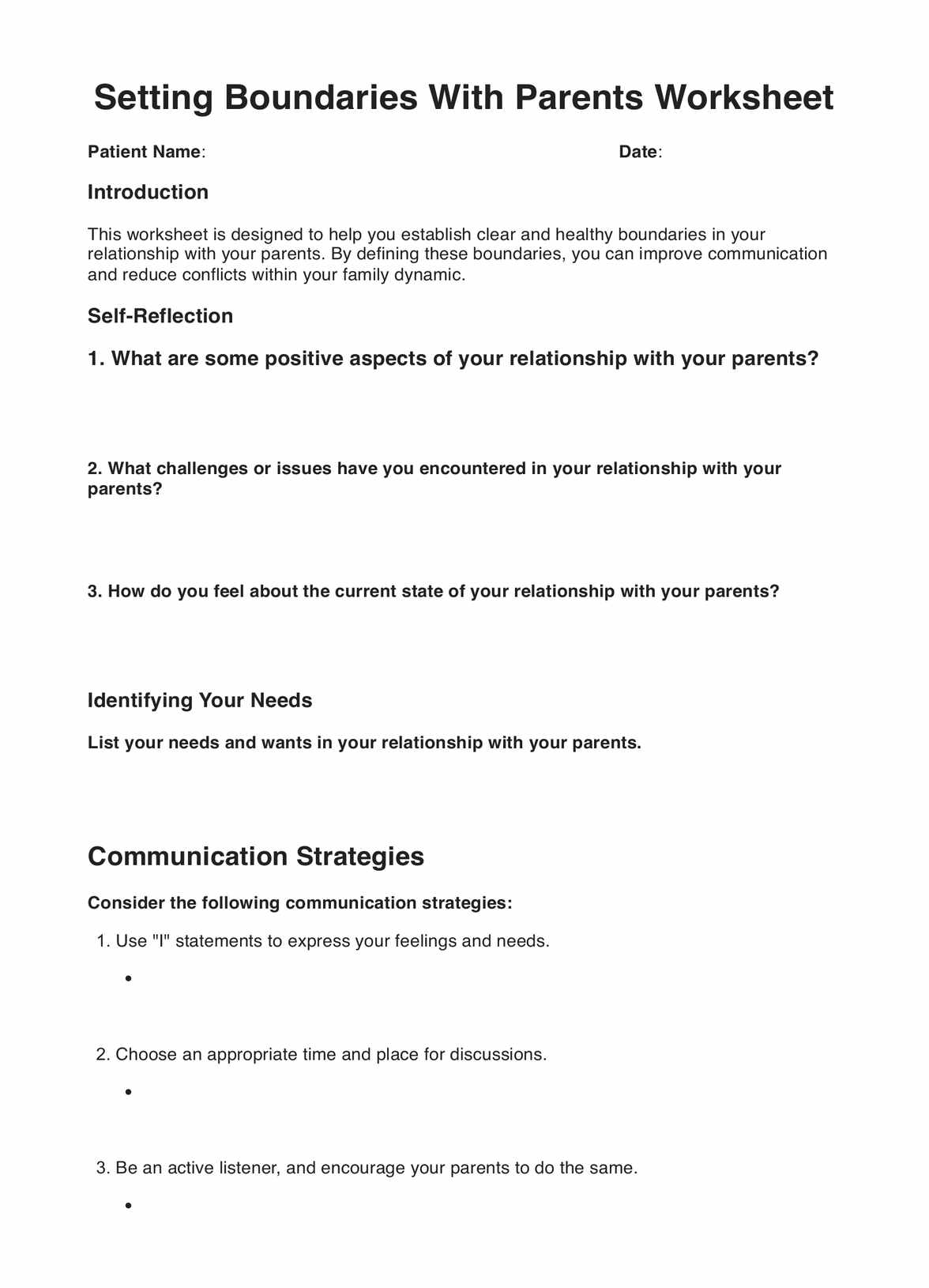
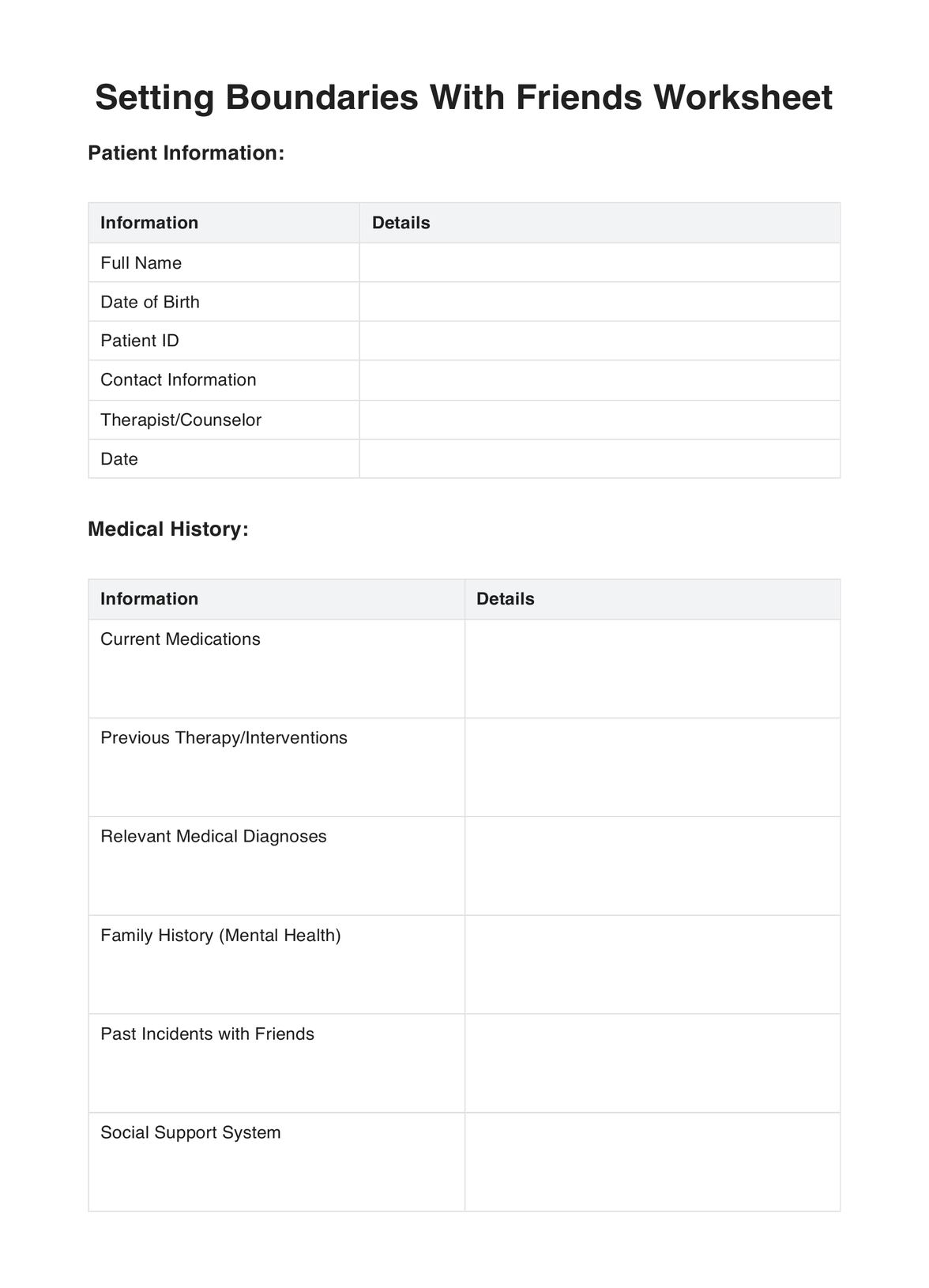
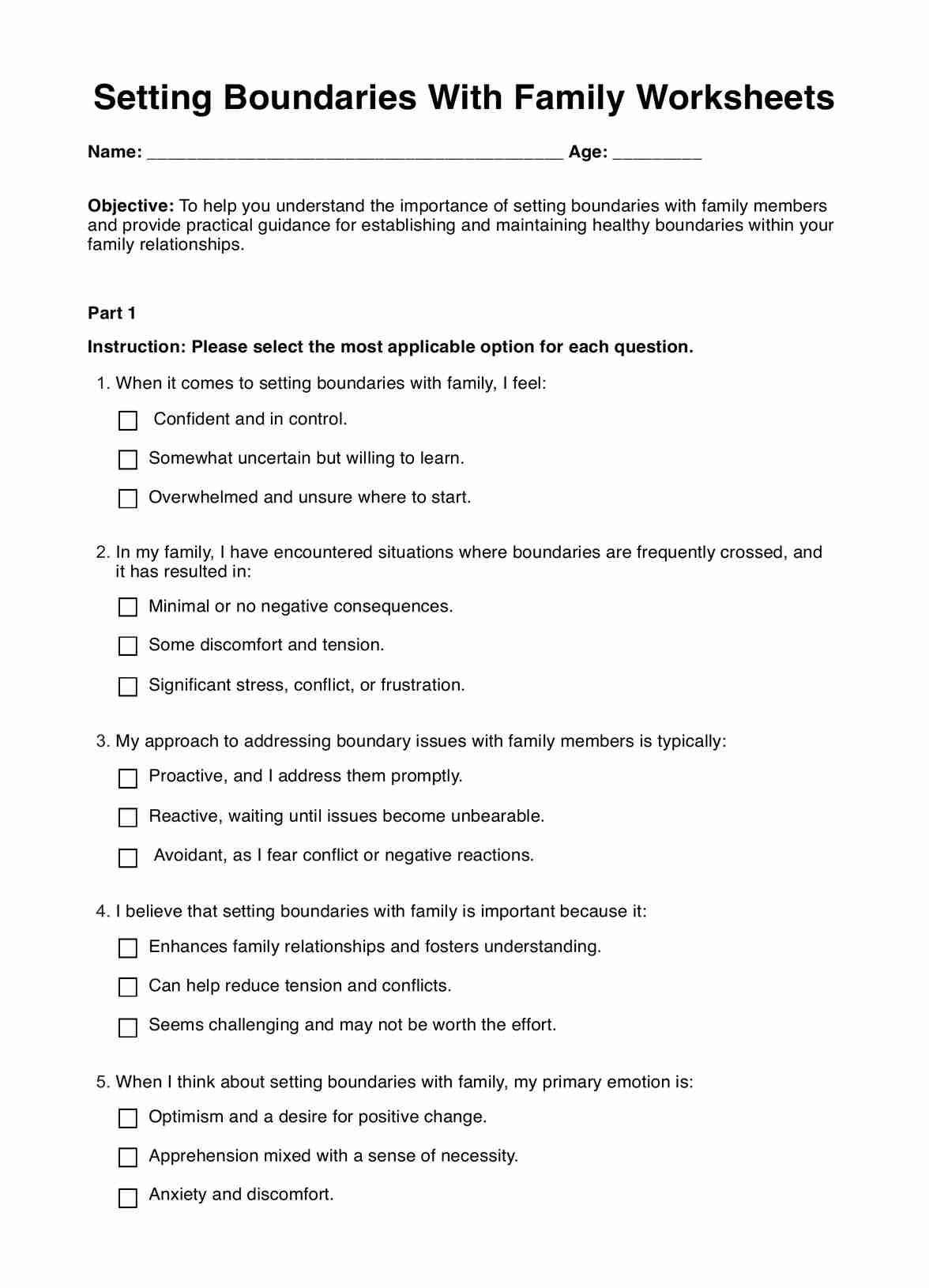












-template.jpg)


